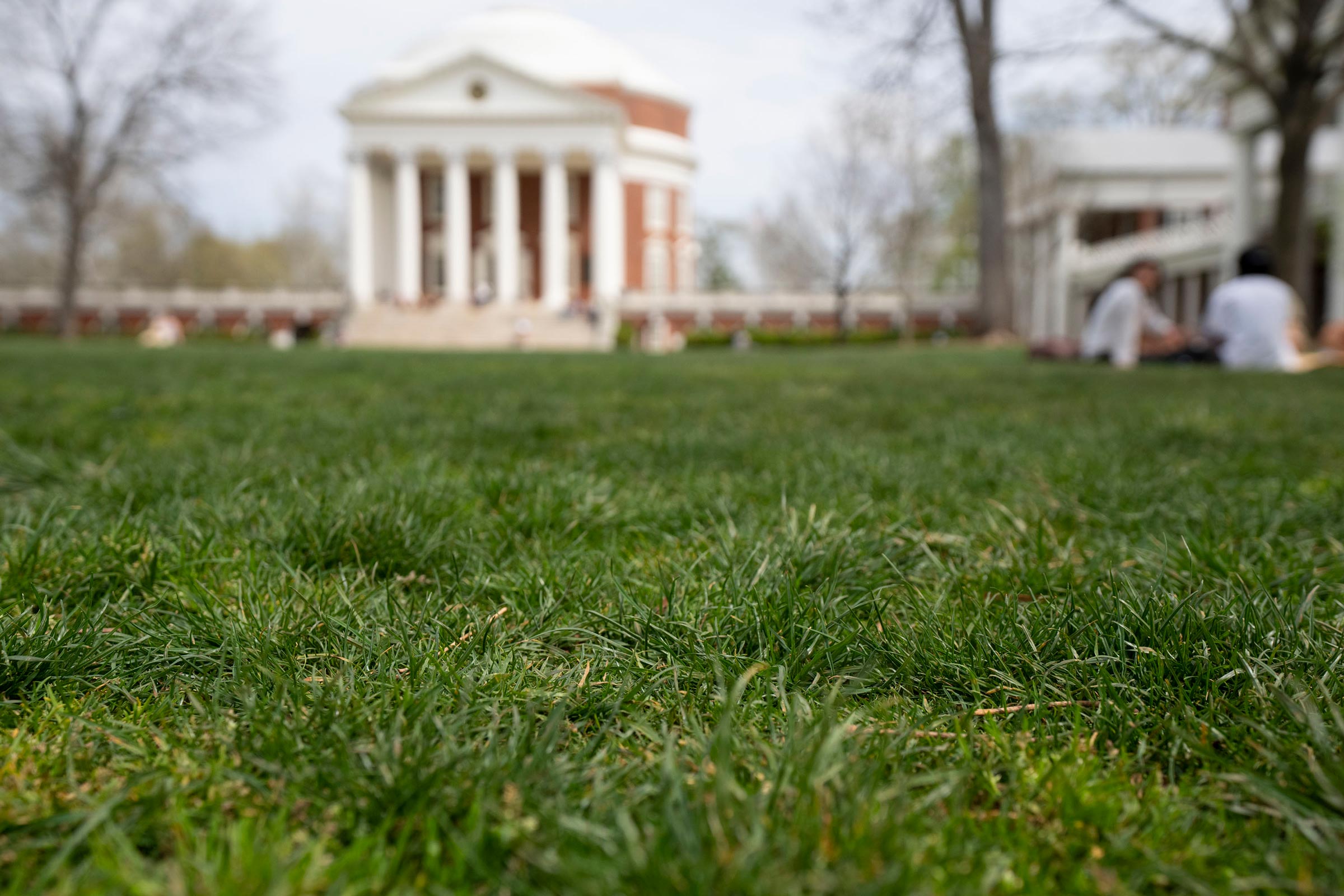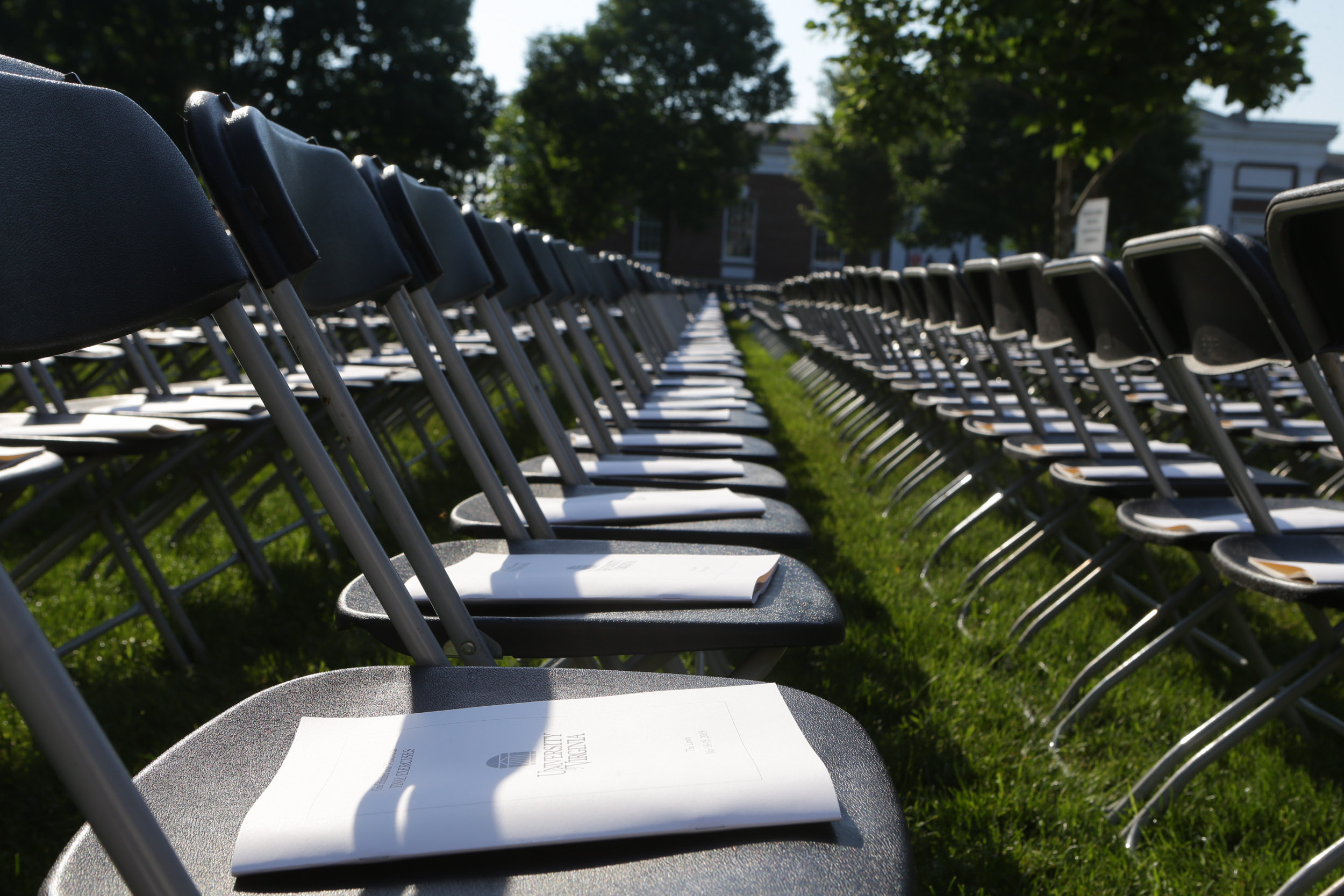While the students are the centerpiece of graduation, the backdrop is the Lawn.
The University of Virginia’s iconic Lawn – the greensward in the center of Thomas Jefferson’s Academical Village – is a lush, living outdoor carpet that requires extensive care.
“Grass is quite challenging to grow in Central Virginia for a number of reasons,” said Travis Mawyer, senior landscape supervisor. “Geologically, our red clay soil presents drainage and compaction issues, and geographically, we are right in the middle of the transition zone between warm-season grasses and cool-season grasses. Both will grow here, but neither thrives, and both present challenges and have their own set of pros and cons.”
UVA Facilities Management landscapers use a blend of grasses combined with flowering species, such as clover, dandelion and other flowering species, which are then groomed with aeration, overseeding and fertilizing.
“The Lawn is a space to be used and enjoyed,” Mawyer said. “A vibrant student life can also impact the health of turf and our ability to grow grass from seed, but we wouldn’t want it any other way. Presenting a beautiful Lawn that can provide both postcard-worthy photos as well as be an active space for people to gather, learn, play, picnic and more is something we take great pride in.”
Every few years, including this year, landscapers use a shockwave aeration machine to break up compacted soil and allow for better drainage of water.












